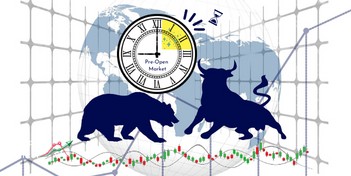Is Price Action Analysis The Same As Technical Analysis?
Read this article to know more
Is Price Action Analysis The Same As Technical Analysis?
Price action analysis and technical analysis are related concepts within the field of trading, but they are not exactly the same thing. Price action analysis is a subset of technical analysis that specifically focuses on interpreting and analyzing the price movements of a financial asset on a price chart.

Price Action Analysis: Price action analysis centers on studying the raw price movements, patterns, and formations that occur on a chart. It involves observing how the price of an asset behaves over time and identifying key levels of support, resistance, trends, and potential reversal points. Price action traders rely primarily on the visual interpretation of price data and use tools such as candlestick patterns, chart patterns, trendlines, and support/resistance levels to make trading decisions. Price action analysis emphasizes understanding market psychology and the behavior of market participants based on price movements alone.
Technical Analysis: Technical analysis, on the other hand, is a broader discipline that encompasses various methods and techniques used to analyze financial markets. It involves studying historical market data, including price and volume, to forecast future price movements. Technical analysis includes not only price action analysis but also the use of technical indicators, oscillators, moving averages, trend analysis, volume analysis, and more. Technical analysts often apply mathematical calculations and statistical models to derive insights from market data.
Technical analysis uses many tools to analyze market data, including:
- Price charts: Price charts are graphical representations of the historical prices of an asset. They can be used to identify support and resistance levels, trend lines, and patterns.
- Technical indicators: Technical indicators are mathematical formulas that are used to analyze price data. They can be used to identify trends, momentum, and overbought/oversold conditions.
- Candlestick charts: Candlestick charts are a type of price chart that shows the opening, high, low, and closing prices of an asset, as well as the volume of trading activity. They are often used to identify candlestick patterns.
Price action analysis, on the other hand, focuses solely on the historical price movements of an asset. Price action traders believe that all the information they need to make trading decisions is contained in the price chart. They do not use technical indicators or other tools to analyze market data.
Price action analysis can be a very effective way to trade, but it is important to remember that it is not without risk. The market can be unpredictable, and even the best price action traders will experience losses. It is important to use risk management techniques to protect your capital when trading.
In summary, price action analysis is a specific approach within the larger framework of technical analysis. While both involve analyzing historical price data to make trading decisions, price action analysis focuses solely on interpreting price movements and patterns without relying on external indicators, while technical analysis incorporates a wider range of tools and methods. Traders often choose their preferred approach based on their trading style, preferences, and the specific markets they trade.




